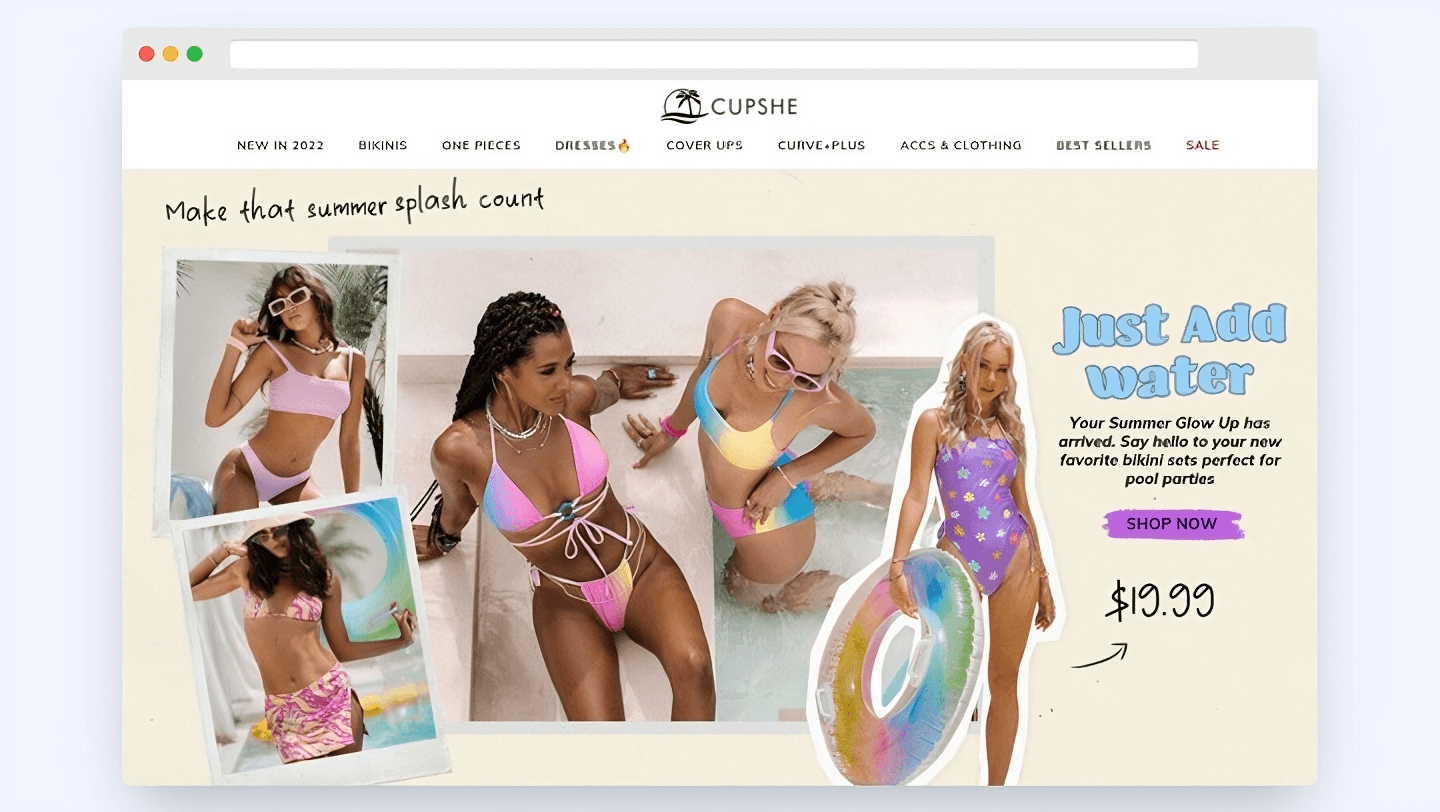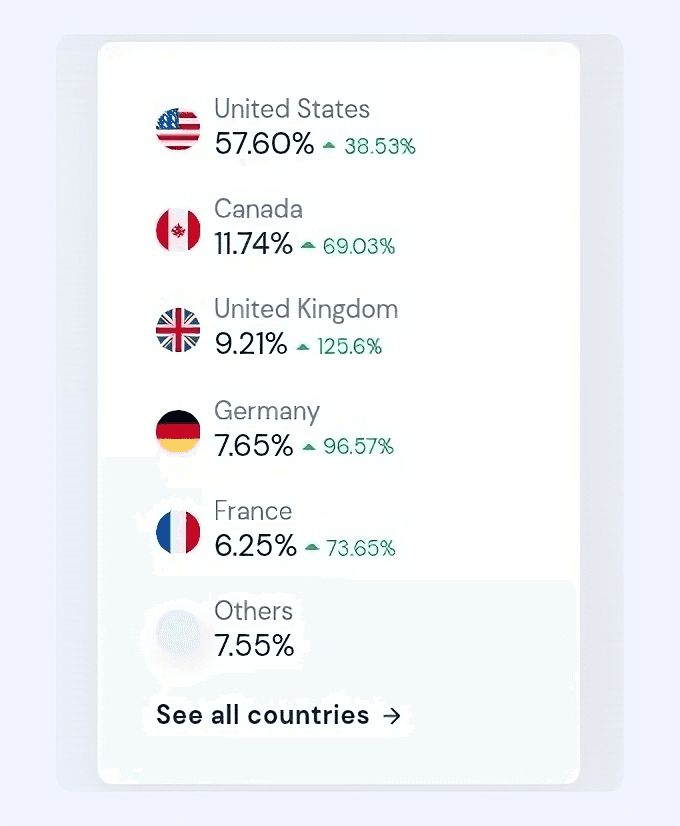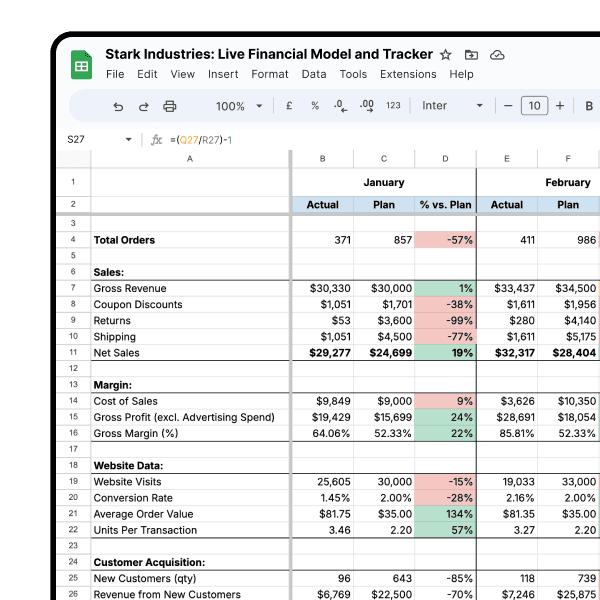Best Practices
15.04.2022
TLDR
Cupshe, a women's swimwear brand, achieved explosive growth by specializing in swimwear, building social proof with English reviews on their website, and strategically directing customers to their site from Amazon. Their focus on user engagement and branding, along with adapting to market trends, contributed to their success and unicorn status.

Founded in 2014 by entrepreneur Mike Zhao, Cupshe’s explosive rise to success can act as a case study on leveraging user engagement to the max. The women’s swimwear company is not unlike many other fast-fashion retailers - their main value proposition revolves around providing trendy swimsuits at highly affordable prices. Cupshe, however, has been uniquely able to distinguish themselves within a highly saturated and competitive market by focusing on branding and user experience above all else. Cupshe’s 2021 VC round brought in $15.5 million, and they have recently experienced a 101% increase in US revenue. Let’s dig in and look at what Cupshe can teach us about streamlining brand and user experience to maximize growth.
Dominate in one category first, then move into another.
Cupshe approaches branding with intention, and has practically turned retailing out of Amazon into an artform. The company positively dominates the “Swimsuits and Coverups” category on Amazon, boasting an incredible 131% increase in sold units year-over-year.
Remarkably, the company that now beats out swimwear retailers like Cocoship and Zaful when it comes to repeat purchases didn’t enter the market as a swimwear company at all. In 2015 Cupshe was founded as a fast fashion company providing a miscellaneous array of products - swimwear being only one of them. It wasn’t until 2016 that they began to zero in on swimwear, and position their brand and company around this specific category.
Two years later in 2018, Cupshe’s global consumer base was upwards of 10 million. It was here that Cupshe’s branding strategy began to kick into high gear. In 2019, the same year the company went international, they also introduced a plus-sized swimwear line. Keeping in line with the brand’s emphasis on user experience and engagement, Cupshe reached out to plus-sized influencers while rolling out their new and inclusive line of products. The company offered influencers discount codes for followers as well as PR packages that included products to try out. These reviews bolstered the company’s social identity, and opened up a line of communication between company and consumer by giving Cupshe access to the thoughts and needs of their customers. By laying the groundwork here, their presence in the US market is still on the rise.

By focusing their brand in on swimwear, and engaging their community of consumers at every turn, Cupshe has been rewarded with brand loyalty and consistent growth of their app and owned site. Cupshe’s app was cited as “the most downloaded shopping app targeting specifically swimwear” in 2021, as well the only swimwear app among the US’ top 500 most downloaded shopping apps. The app boasted 2.2 million installs in 2021 and saw 146,000 installs in May 2021 alone.
The company is now expanding their product line and has since made a leap into the athleisure space. Their latest product offerings, introduced this year, includes non-swimwear items like leggings, sweaters and shorts.
Use social proof to establish trust in new markets.
Breaking into the US market while maintaining the brand’s integrity and image is no small feat. How did Cupshe do it? They began with building social proof on their newly launched website. Working with partner agencies, they managed to generate over 146,000 English reviews on their US-facing website.
Building reviews on their product pages played a critical role in keeping their audience on their website longer, improving conversion rates, and even increasing average order value. According to their reports, 40.6% of Cupshe’s customers interact with reviews and photos while shopping. In addition, these highly engaged customers have a 10% higher average order value, and spend 99.5% longer on the website than the rest of their audience. The results of their efforts were an overall 24% increase in average order value, and 101% increase in US sales.

Improve your DTC game. Sign up for weekly tips.
Play with product availability to drive consumers to buy from you directly.
Once Cupshe’s brand became more known on Amazon, they could take advantage of their large customer base to direct some traffic to their own website. In 2016, they began limiting their product availability on Amazon by only offering limited releases of select items. For instance, where the Cupshe website offers six subcategories within their curve+line, Amazon only offers three. This way, customers are guided towards their website to look at the full range of their product lines.
Cupshe has reinforced this strategy by investing more marketing dollars to paid search. From 2019 to 2020, their paid search traffic rose 2%, followed by 2.7% the next year.
Strategically selecting bestseller and certain plus sized products to only be featured on their owned site is likely how Cupshe managed to grow traffic to their owned site by 41% year-over-year.
Nevertheless, Amazon still remains a large part of Cupshe’s success. Despite the limited product lines available on the online marketplace, the company still saw a massive 131% jump in Amazon sales. Cupshe senior marketing director, Jessie Han, says that 70% of their sales come from their own site and 30% come from Amazon.
Cupshe’s success can be attributed to their refusal to be undaunted by saturated, competitive international markets, ability to focus on user experience and brand, and their willingness to adapt and adhere to market trends. Cupshe’s strategy is evident at every level of their business. Whether they are releasing new product lines to keep up with the trends, or strategically driving customers to their owned site, Cupshe makes sure that all roads lead back to their brand.


